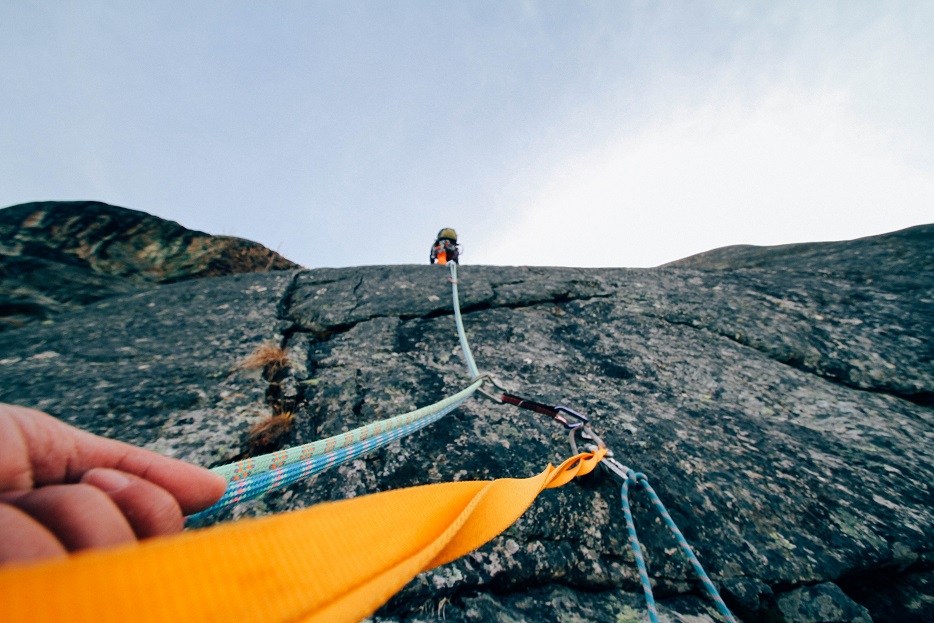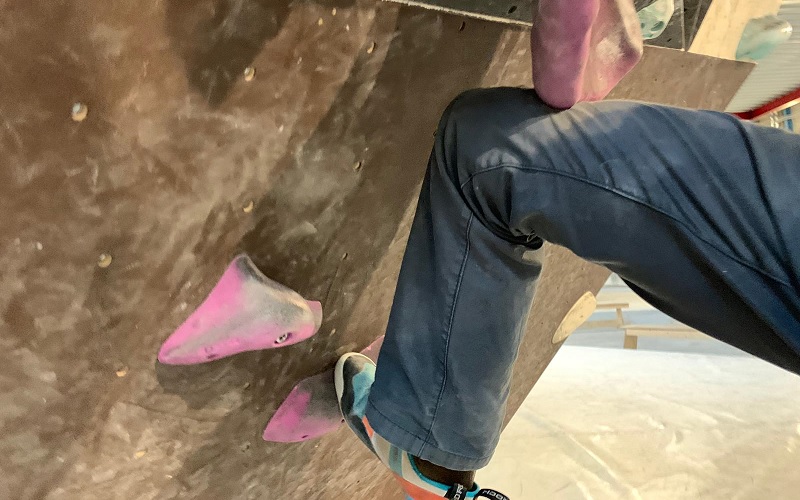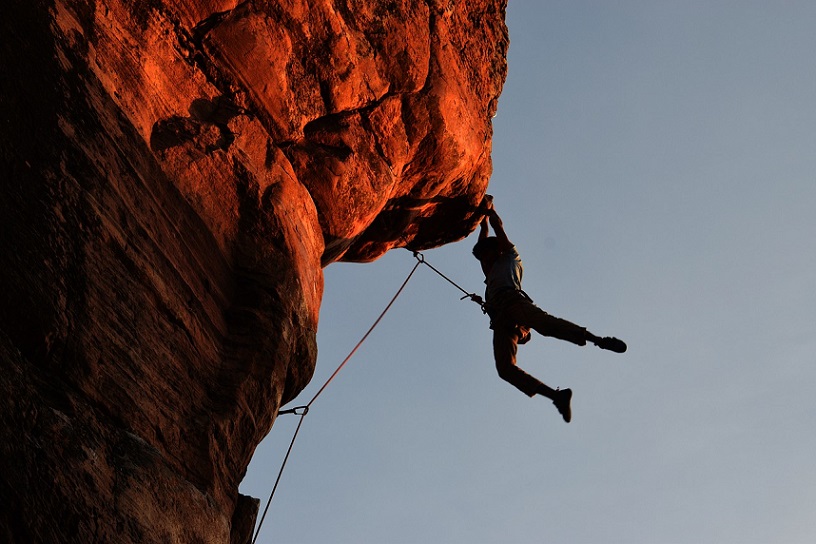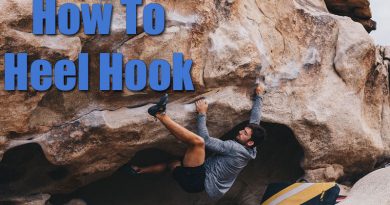Every experienced climber knows that technique is the most important tool one can have. The more advanced your technique, and the better your execution of it, the safer your climbs will be.
Additionally, having solid technique can allow you to better perform a wide variety of different climbing moves. It can also allow you to complete climbs that would otherwise be too difficult.
Unfortunately, learning the proper technique takes time. The good news, however, is that I’ve put together a guide on one of the most important ‘advanced’ climbing techniques: deadpointing.
Though difficult to master, deadpointing is sometimes done naturally by beginners, even though they might not even realize it.
Are you ready for your introduction to this powerful technique? Let’s take a closer look at it below!
What is Deadpointing (and Where Did Its Name Come from?)
Deadpointing refers to a climbing technique that allows for climbers to turn into a rock wall and extend for a new hold even with gravity weighing them down.
What makes deadpointing so unique—and vital—is that it’s done from what many may consider a point of no return. In other words, in order to execute a deadpoint, climbers must first be in such as position that if they were to lose their footing, they would quickly fall. In these cases, the full force of gravity is pulling at one’s body, making it difficult to maintain the proper holds.
Some have likened the deadpoint to tossing an object into the air. Once it reaches its peak height, just before it falls, it has reached its deadpoint.
As you may have guessed, this is also where deadpointing gets its name. One way to think about it could be that if one fails to execute their deadpoint, they won’t be alive much longer if climbing in the wild— not without an attentive belayer, at least.
But even if you’re just climbing in your local gym, mastering the deadpoint is a must if you wish to complete more challenging climbs.
What Are Controlled Dynamic Moves in Deadpointing?
In essence, the deadpoint results from a controlled dynamic move. These oxymoronic moves require one part of the body to stay motionless while another moves in a controlled manner.
Sound simple?
Well, they’re easier said than done.
In deadpointing, motion comes from the hips, followed by the hands, and not the feet. Done from a position of full extension, deadpointing allows climbers to regain comfortable holding while advancing up a rock face.
Because of its nature, however, it requires some amount of skill to pull off. Beginner rock climbers, for instance, would often struggle to simply attempt and successful execute this difficult move. It’s a good thing, however, that they never really have to. Deadpointing really only becomes necessary in difficult routes that require full extension from the climber.
How Should You Use Your Hips While Deadpointing?
Remember when I said that one moves their hips—and not their feet—when deadpointing?
This important step proves integral to a climber’s safety when attempting to execute the deadpoint. Generally speaking, this results for a variety of reasons.
Principally, moving from the hips allows the climber to retain balance. Remember that climbers perform this move when already at full extension. Losing either of their foot or hand holds in this situation can cause a lack of balance—and a fall.
Because of this, climbers need to first move their hips in order to turn towards the wall. At the same time, they’ll reach a brief moment where they can now extend their bodies to find the next hold.
For this reason, climbers must always remember to execute a dynamic hip motion prior to and simultaneously with their reach.
How to Deadpoint
Deadpointing can be difficult to master, but once learned, climbers can appreciate its simplicity. The art of deadpointing can be achieved in three steps:
1. Firmly Place Your Feet
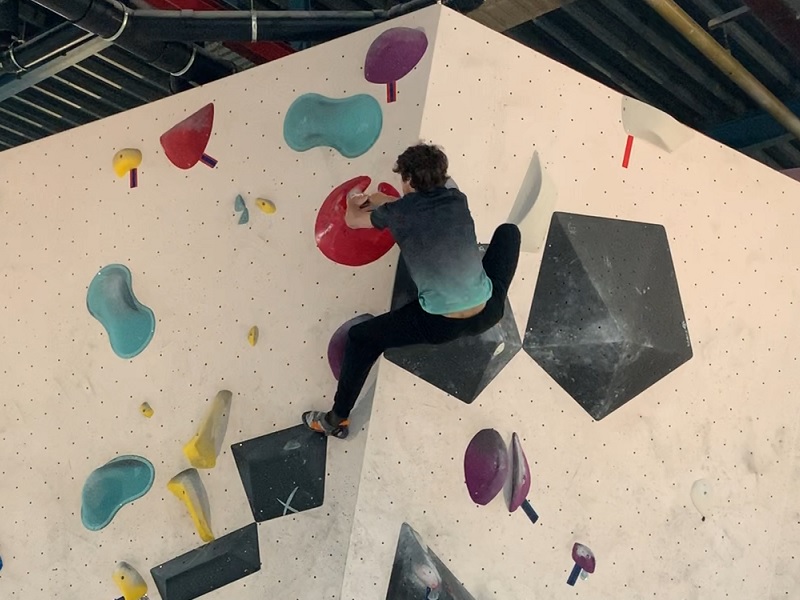
Make sure that you’re not moving your feet during the motion. You’ll want to keep them firmly grounded to whatever foothold you have available.
Attempting to move your feet can cause you to move off balance and put your life at risk. For this reason, always remember to keep your feet still when executing the Deadpoint.
2. Turn Your Hips Inward
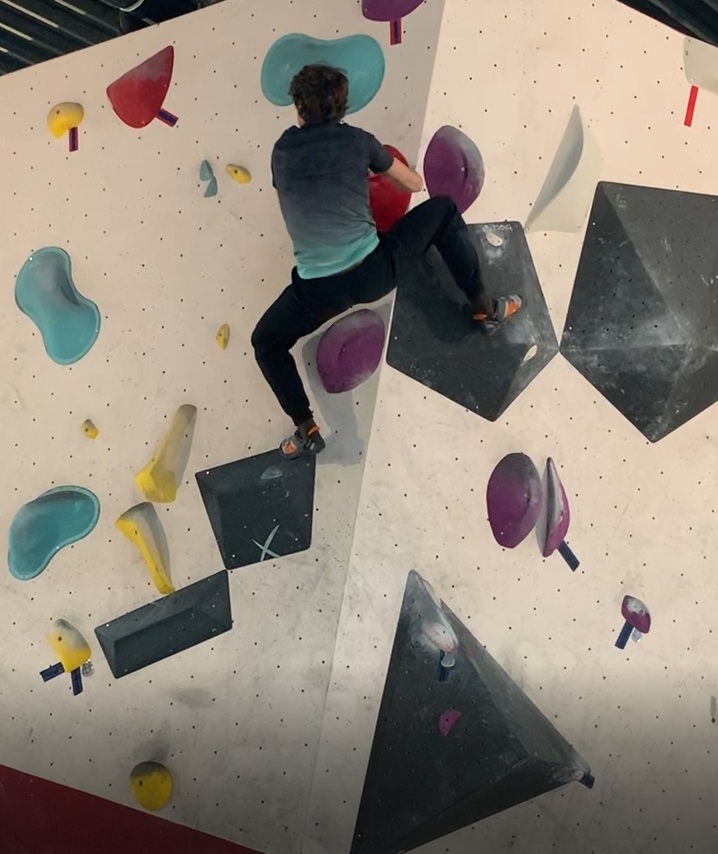
Next, you’ll want to swiftly turn your hips inward toward the rock face.
By doing so, you’ll momentarily change your body’s positioning and center of gravity. Additionally, you’ll give yourself the chance to reach for other holds instead of remaining stuck and stagnant on the rocks.
Remember that prior to performing the Deadpoint, gravity will be pulling at your body from all directions. And because you’re at full extension, you’ll have little room to combat this.
By turning your hips inward, you’ll open a brief window of opportunity to make a grab for the next hold.
3. Reach for the Next Hold
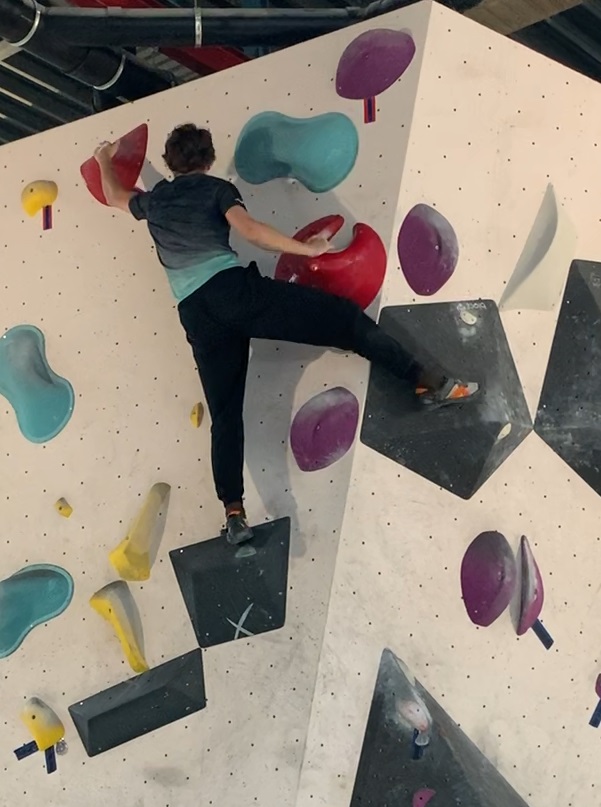
Once your body has been repositioned, you’ll want to use this brief opportunity to take your next hold on the rocks.
Keep in mind here that this will mean that steps two and three will overlap. After your body’s state has been returned to normal, gravity will be acting on you again—assuming you didn’t fall of course.
For this reason, make sure that you reach for your next hold when your body is facing the rock.
When to Deadpoint
When climbing, have you ever felt as if you’re being stretched out in a particularly tough game of Twister?
If so, you may even be able to recall a time when you were at full extension and unable to make a leap for your next hold without risking destabilization. In that case, you’ve been in situations in which deadpointing would be helpful.
In other words, use this deadpointing technique when attempting to reach a new hold while your body is at full extension—and your only other choice is to drop.
Though it will take time to learn, this powerful deadpointing technique can prove quite advantageous while on the rocks.
See if you can spot all the deadpoints in this compilation!

